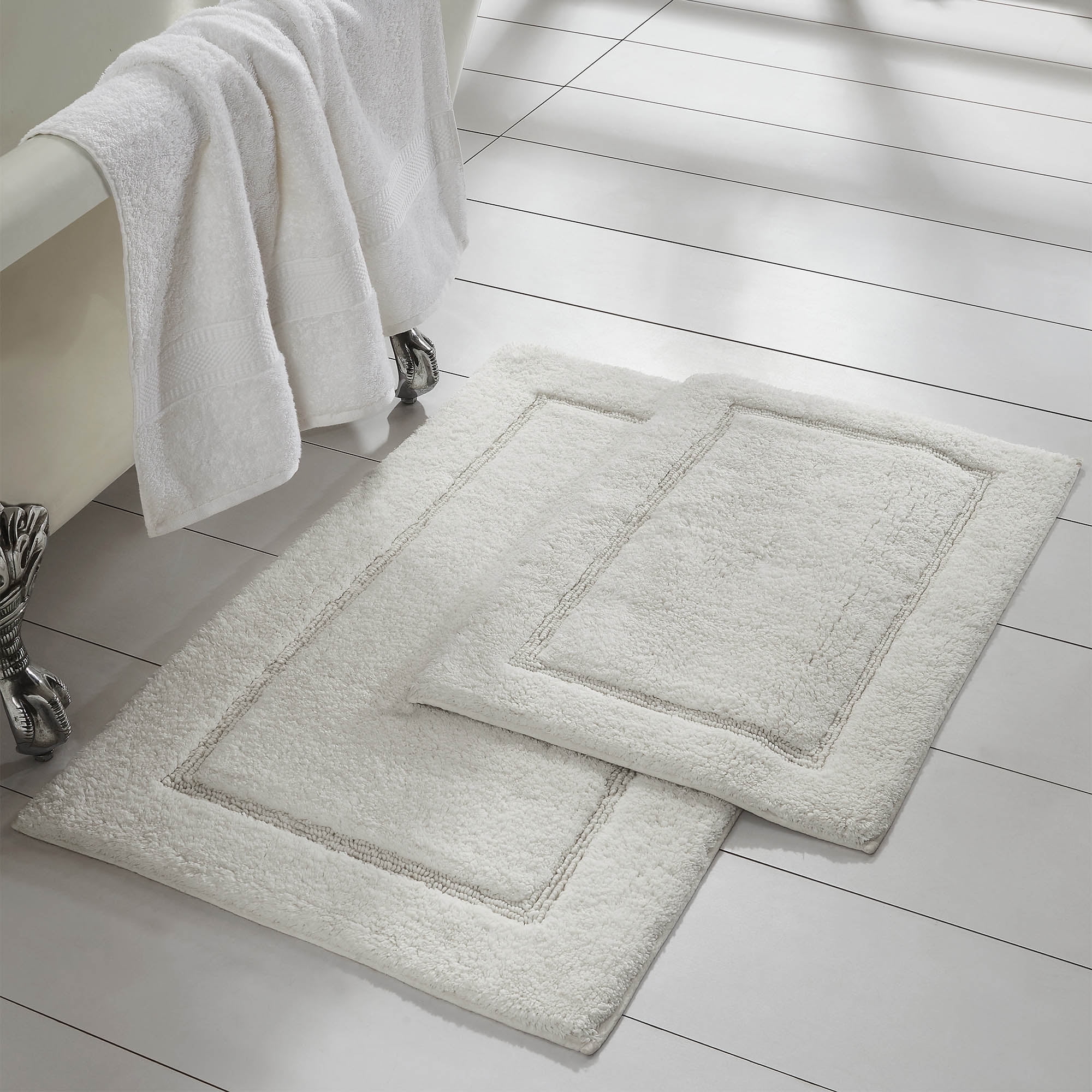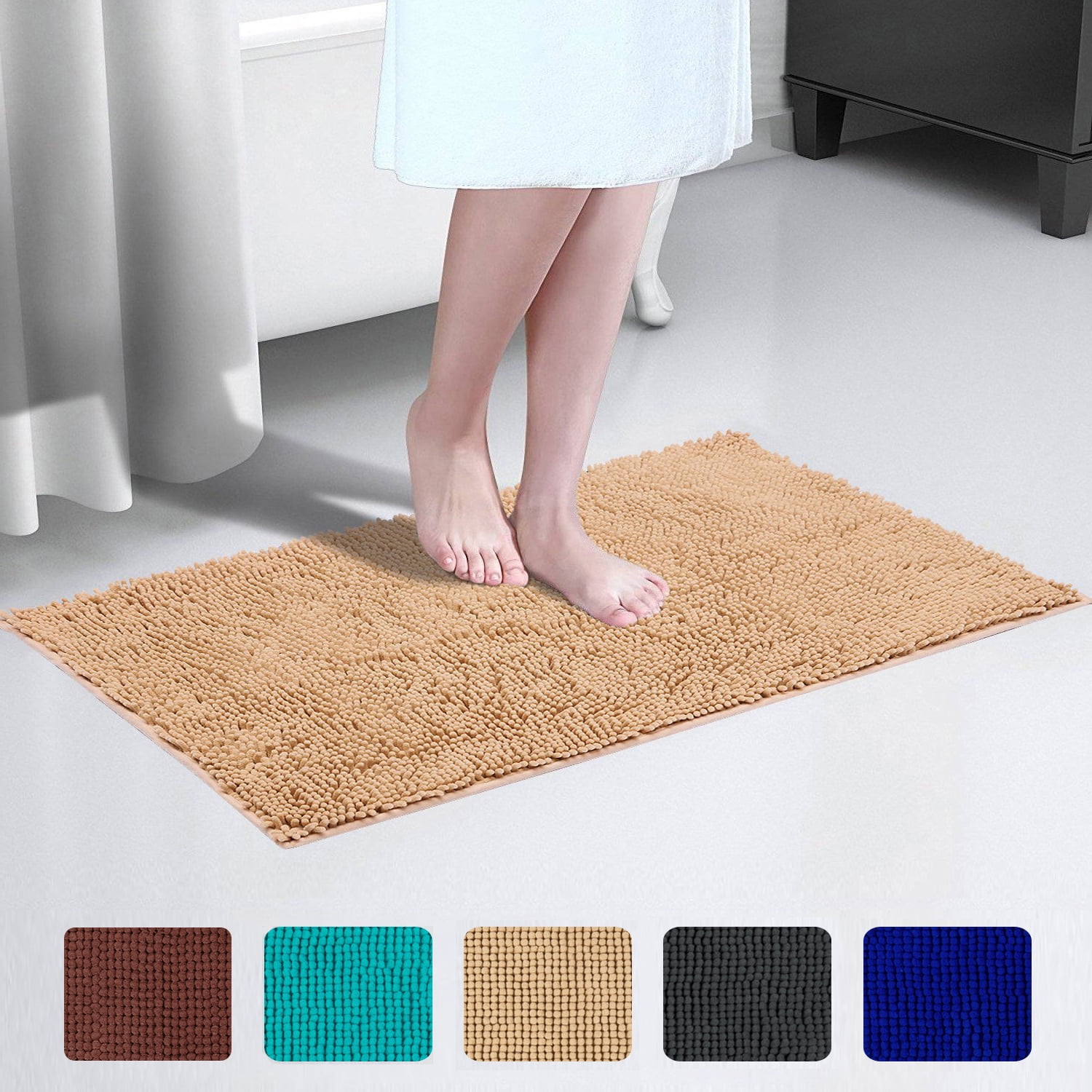Understanding Anti-Slip Bathroom Rugs: Anti Slip Bathroom Rugs

Bathrooms are often considered a haven for relaxation and rejuvenation, but they can also be a breeding ground for slips and falls. The slippery nature of wet tiles and floors poses a significant safety risk, particularly for elderly individuals, children, and those with mobility issues. This is where anti-slip bathroom rugs come into play, providing a crucial layer of protection and peace of mind.
Types of Anti-Slip Materials
Anti-slip bathroom rugs are designed to enhance safety by reducing the risk of slipping on wet surfaces. These rugs employ various materials to achieve this goal.
- Rubber Backing: Rubber is a widely used material for anti-slip bathroom rugs due to its inherent grip and resistance to moisture. Rubber-backed rugs provide excellent traction on wet surfaces, making them a popular choice for high-traffic areas like showers and bathtubs.
- Vinyl Backing: Vinyl is another common material used in anti-slip bathroom rugs. It offers good durability and water resistance, making it suitable for various bathroom environments. Vinyl-backed rugs are often lightweight and easy to clean.
- Microfiber Backing: Microfiber is a synthetic fabric known for its softness and absorbency. Microfiber-backed rugs can quickly absorb water, reducing the risk of slipping on damp surfaces. However, microfiber may not provide the same level of grip as rubber or vinyl.
- Gel Backing: Gel-backed rugs offer excellent adhesion to smooth surfaces. The gel layer creates a strong bond with the floor, preventing the rug from shifting or sliding. Gel-backed rugs are particularly effective on tile floors and are often used in high-risk areas like shower stalls.
Common Slip Hazards in Bathrooms
Bathrooms are notorious for slippery surfaces, creating a range of potential slip hazards.
- Wet Floors: The most common slip hazard in bathrooms is wet floors. Water from showers, bathtubs, and spills can create a slippery surface, increasing the risk of falls. Anti-slip rugs placed near showers, bathtubs, and sinks help absorb water and reduce the risk of slipping.
- Soap and Shampoo Residue: Soap and shampoo residue can leave a slippery film on bathroom floors, making them hazardous. Anti-slip rugs with absorbent materials can help absorb this residue, reducing the risk of slips and falls.
- Hard Tile Floors: Tile floors are common in bathrooms but can be very slippery when wet. Anti-slip rugs provide a layer of traction on tile surfaces, preventing slips and falls.
- Smooth Surfaces: Smooth surfaces like polished marble or granite can be extremely slippery when wet. Anti-slip rugs with textured surfaces offer a greater degree of grip on these surfaces, enhancing safety.
Choosing the Right Anti-Slip Bathroom Rug

Choosing the right anti-slip bathroom rug is essential for safety and style. It involves considering factors like size, shape, color, and design, and selecting a rug that complements your bathroom’s layout and personal preferences.
Size and Shape
The size and shape of the rug should be carefully considered to ensure it fits the space and provides adequate coverage. A larger rug can provide more coverage and comfort, while a smaller rug can be more practical for smaller bathrooms. The shape of the rug should also be considered, with rectangular rugs being the most common, but oval, round, and even custom shapes are available.
Color and Design
The color and design of the rug should complement the bathroom’s decor and personal style. Consider the overall color scheme of the bathroom and choose a rug that blends in or provides a pop of color. Patterned rugs can add visual interest, while solid-colored rugs can provide a more minimalist look.
Material
The material of the rug is an important consideration, as it affects its water absorption, durability, and ease of cleaning. Here is a table comparing different anti-slip bathroom rug materials:
| Material | Water Absorption | Durability | Ease of Cleaning |
|---|---|---|---|
| Cotton | High | Moderate | Easy |
| Microfiber | High | High | Easy |
| Polyester | Moderate | High | Easy |
| Rubber | Low | Very High | Easy |
Tips for Selecting the Right Rug
- Measure the area where you plan to place the rug to ensure you get the right size.
- Consider the traffic flow in the bathroom and choose a rug that is durable enough to withstand frequent use.
- Select a rug with a non-slip backing to prevent accidents.
- Choose a rug that is easy to clean and maintain.
Safety and Maintenance

Anti-slip bathroom rugs are designed to enhance safety in your bathroom, but their effectiveness depends on proper installation, use, and maintenance. Following safety guidelines and implementing regular cleaning practices ensures optimal performance and prevents potential hazards.
Safety Guidelines
- Placement: Anti-slip rugs should be placed on dry surfaces and secured to prevent slipping. Use a non-slip backing or adhesive to secure the rug in place. Avoid placing the rug on wet surfaces as it may become a tripping hazard.
- Inspection: Regularly inspect the rug for signs of wear and tear, such as frayed edges or loose fibers. Replace the rug immediately if it shows any signs of damage.
- Avoid Overlapping: Avoid overlapping rugs, as this can create a tripping hazard. Ensure that the rugs are laid flat and do not bunch up.
- Use Caution: Even with anti-slip rugs, it is important to exercise caution when walking on wet surfaces. Always use a towel to dry your feet before stepping onto the rug.
Cleaning and Maintenance, Anti slip bathroom rugs
- Vacuuming: Regularly vacuum the rug to remove dirt, dust, and debris. Use a brush attachment to reach the fibers and loosen any embedded particles.
- Washing: Most anti-slip rugs are machine washable. Check the manufacturer’s instructions for specific washing recommendations, including water temperature and drying settings.
- Drying: After washing, air dry the rug completely before using it again. Avoid placing the rug in a dryer, as this can damage the fibers and reduce its effectiveness.
- Spot Cleaning: For spills or stains, use a mild detergent and a damp cloth to clean the affected area. Rinse thoroughly and allow the rug to air dry completely.
Potential Hazards
- Improper Placement: Placing an anti-slip rug on a wet surface can create a tripping hazard. The rug may become slippery, increasing the risk of falls.
- Loose or Worn Rugs: A loose or worn rug can easily slip or bunch up, creating a tripping hazard. Regularly inspect the rug for signs of wear and tear and replace it if necessary.
- Improper Cleaning: Using harsh chemicals or improper cleaning methods can damage the rug’s fibers and reduce its effectiveness. Always follow the manufacturer’s cleaning instructions.
Anti slip bathroom rugs – Anti-slip bathroom rugs are the unsung heroes of bathroom safety, silently preventing disastrous slips and falls. But even the most secure rug can’t combat the slippery surface of a wet floor, which is where the art of staging towels in the bathroom comes in.
By strategically placing plush towels near the shower or tub, you create a welcoming haven for damp feet, ensuring a safe and comfortable transition from water to dry land. And with a secure anti-slip rug beneath your feet, you can truly embrace the serenity of your bathroom oasis.
Anti-slip bathroom rugs are a vital safety measure, shielding against treacherous slips and falls. A perfect example of this is the bathroom rug runner 24×60 , which offers a long stretch of secure footing as you navigate the wet expanse of your bathroom.
Investing in such a rug is not just a design choice, but a crucial step in safeguarding your well-being, ensuring a safe haven within your own home.